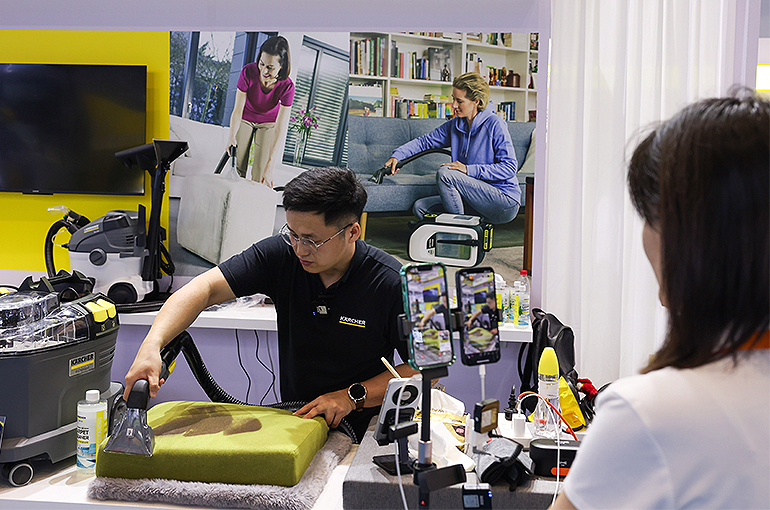 Chinese Technical Know-How, Brands Gain Traction Overseas, Boosting Exports
Chinese Technical Know-How, Brands Gain Traction Overseas, Boosting Exports(Yicai) April 17 -- Chinese technologies and brands are seizing a larger share of the global market, not just China-made products, as technical innovations, cost control and localization help reshape the global value chain, Yicai learned at the ongoing 2024 China International Consumer Goods Expo in Hainan province.
The fully automatic car washing machine on display in Kärcher’s booth at the expo was developed by the German cleaning equipment maker's China team and is on sale not only in China, but also in Thailand.
It is the first time that a product developed by the firm’s China team has been introduced into an overseas market, Tang Xiaodong, president of Kärcher China, told Yicai. This is an example of Chinese technical know-how being exported to the world, he added.
It is proof that the China team not only has the skill set to serve local customers, but also to penetrate markets in other countries, so as to open up the entire chain from sales to after-sales services, Tang said.
Thanks to technical improvement and ready availability, Chinese products which are competitively priced have a greater opportunity to enter large markets and this will help boost exports, Tang said. The trick is to seize global market share with high-quality products that meet a certain technical threshold at a reasonable price.
Good Quality
Yao Dong, the head of a children's clothing manufacturer in Huzhou, is setting up a 5,000-square-meter office in Vietnam and opening a shop in the largest clothing wholesale market in Southeast Asia, he told Yicai. He has just returned from a scouting trip and will be heading out again later this month to recruit staff and connect with local e-retailers.
The outlet will mainly sell the firm’s own brand of clothing, Yao said. The company’s children’s outfits are positioned in the medium to high-end market and so are a better quality than the garments produced locally.
The birth rate in Southeast Asia is growing and so the children’s apparel market has good prospects, Yao said. The region has become the firm’s main source of orders, making up for a decline in orders from European and US customers.
Unique Products
More types of Chinese products are being sold overseas, and each is positioning itself differently in the market, said Zheng Mingju, head of the retail and consumer products sector at UK professional services network Ernst & Young’s China division.
“For example, home appliance firms, which were the first to expand their business abroad, accelerated the globalization of their brands by building factories overseas and carrying out mergers and acquisitions,” said Zheng. Consumer electronic companies are carving out a space in foreign markets through technological innovation, while independent clothing lines and cosmetics are proving popular overseas due to their unique products and designs. And the future market for tea chains and suppliers of other food items cannot be underestimated, he added.
Going Local
In order to better adapt to overseas markets, Chinese companies recognize the importance of localization, Zheng said. From product design to marketing to supply chain management, they strive to meet local customers’ needs and boost consumer awareness and brand loyalty, he added.
Chinese products have competitive advantages in the form of cost control, product diversification, a complete and flexible supply chain, the upgrading of smart manufacturing and vast online marketing experience, Zheng said.
Editors: Tang Shihua, Kim Taylor